
Termite Control and Monitoring at MD Weaver
By Mark Weaver, Board Certified Entomologist
The IPM Approach to Termite Management Success:
Termite Baiting and Monitoring Systems are the best IPM and reduce or eliminate the need of chemicals in the soil.
Since 1999, MD Weaver has been controlling and monitoring for termites with the use of in-ground termite stations. This approach aligns best for sustainable termite management and the guidelines of GreenPro® and best practices of integrated pest management (IPM).
The Incredible Termite:
Unlike warmer regions in the United States, the termites in New England are confined to the subterranean type, the termite species Reticulitermes flavipes and related species.
Subterranean termites reside in a network of interconnected colonies in the soil, and sort of “commute” to one’s home to chow down on delicious cellulose, with no mercy for the wood that makes up you home!
Interestingly, termites are an offshoot of cockroaches and have evolved with symbiotic bacteria in their stomachs to digest the wood sugar, cellulose. A symbiotic protist that lives in the guts of these wood-eating insects breaks down cellulose found in plant cell walls. And inside each protist lives beneficial bacteria that assist the metabolic process.
But you do not have to know all of this, but if you find it interesting like I hope you do, you will find these creatures quite fascinating. For more reading, use the following article link to the UMASS Amherst website. It is well written for basic understanding of the termite control process
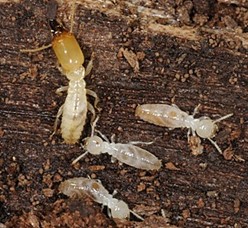
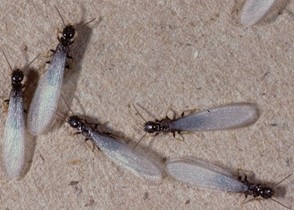
Note the pictures of the winged termite alates (“swarmers”) that can suddenly appear on your floor in high numbers! And note the picture of the termite workers which in the caste system are the ones eat the cellulose and the wood in your home.
Monitoring and Managing Termites:
There are two main approaches to controlling subterranean termites, soil treatment, and termite baiting systems. Based on the principles of integrated pest management, I have chosen the termite baiting approach to be the most practical, effective, and environmentally sound. Termite stations also provide monitoring for termites, a crucial part of IPM. Spray chemicals are used not as the central control method but as a supplement to termite baiting, applied in the soil or applied directly to the point of termite feeding.
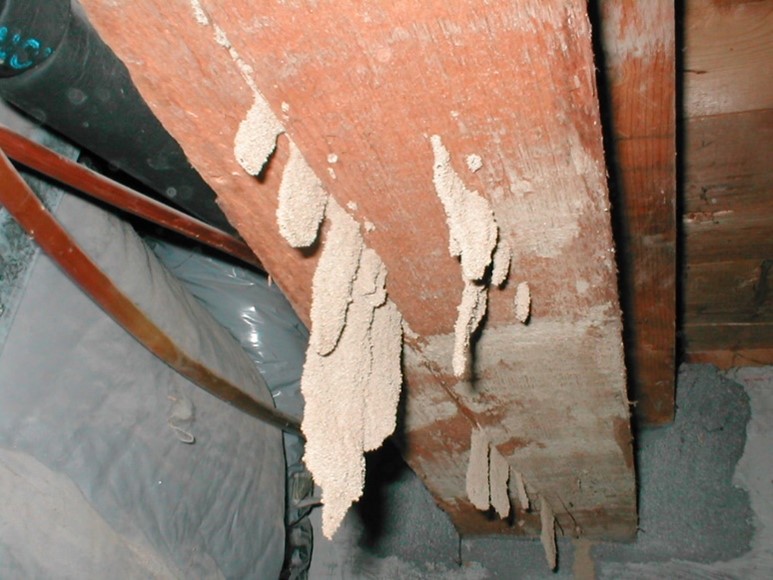
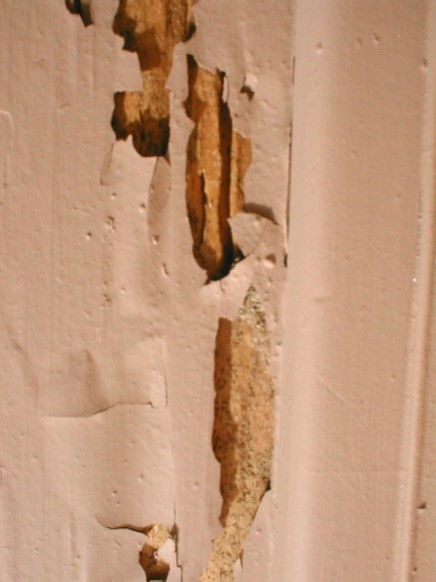
These pictures show the “mud” termites use to make shelter tubes and the infestation of a supporting beam of the home of one of our clients prior to starting the termite program. There is also a picture of the damage where termites have been feeding on the wood under the paint of a trim board:
Termite Baiting Systems
There are multiple brands of termite baiting systems. We have used the Exterra® and the Advance® baiting systems primarily.
For more information, please visit
www.exterra.com and https://pestcontrol.basf.us/products/advance–termite-bait-system.html.
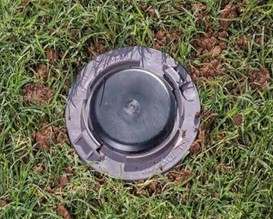
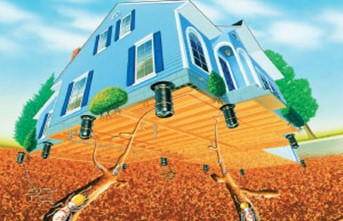
Swarming termites can be confused with carpenter ants, and there are basic differences.
If you suspect you are having an issue with termites or are not sure what is happening, contact us today.
Sincerely,
Mark D. Weaver, BCE, LEED Green Associate